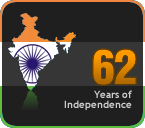Continuing from our discussion in Part 1...
Who are Maoists and what do they want?
Maoists as they stand in India today are members of the party called Communist Party of India (Maoists). They achieved a sense of unity in 2004 by merging the two major groups called Maoist Communist Center (MCC) and People’s War Group.
Maoists do not believe in our constitution or in our parliamentary form of democracy and want to establish a new people’s democracy where there is no exploitation of masses by the few. Ultimately their objective is to overthrow this system and install a dictatorship of the proletariat (i.e. workers, peasants and masses) for leading the people’s democracy of India. Maoists believe that the current system of democracy cannot deliver justice and can only facilitate the exploitation of masses by the few sections of rich, bourgeoisies and capitalists.
Historical perspective
Maoism in India has its roots in communist philosophy. Voices that support their extreme view of armed rebellion were present even during the pre-independence era. However, the armed struggle of Telangana during the early years of independence is one of the significant events where extreme leftist had a major role in a public issue of great importance.
Maoism popularly known as Naxalite movement had its beginnings in a small village by name Naxalbari in west Bengal. On 2nd March 1967, a poor peasant by name Bimal Kissan after winning a case in the court for his land went to till his land. However, the landlords prevented the execution of judicial order by using brute force. All the poor peasants of the village stood by Bimal Kissan and rebelled against the landlords. This act of defiance spread like a wild fire and the poor peasants in many areas took to arms and tried to take their lands by force. Such was the beginning of mass support for the movement.
From that point onwards, the movement grew and weakened in different phases. One of the main reasons for their strength is the strategy they adopted to try and enlist the support of people who are denied justice and are untouched by our democratic system. Their approach to build mass movements about the issues that concern large masses of the people yielded more support to Maoists. Main reasons that contributed to their weakening are ideological and strategic differences between themselves. Congress adopting a policy of welfare state with the establishment of socialistic society as the objective has contributed to reduce support for the Naxalite/Maoist movement.
Understanding the main ideological and strategic differences between the Maoists is important to understand the nature of the movement. Some of the contradictions that contributed to the differences can be listed out as follows:
- Who should lead the revolution? Is it peasants (as in the Chinese Model)? Is it workers (as in the Russian Model)? OR is it a mixture of both?
- Whether to participate in the parliamentary democracy while building the movement OR to completely denounce and ignore the present system of democracy?
- Whether to adopt a military strategy as the only means OR mass movements OR a mixture of both?
- Whether to establish a common front with other mass movements (e.g. Dalit movement, feminism, environment protection etc.)?
- Who are the class enemies? Are they landlords? Are they capitalists? OR both?
- Whether to adopt an aggressive military approach? OR to build the military capability for future while focusing on mass movements in the short term?
These and many other contradictions in thinking lead to many splinter groups in Maoists. However, the common thread in their ideology and consensus on what they want to establish resulted in a major unification in 2004 in which majority of the groups merged together to form CPI (Maoist). CPI (Maoist) released a document and the program of what they want to establish and how they want to sustain the people’s revolution in their new democracy.
What do Maoists want to establish?
Their ultimate goal is to overthrow the current system of democracy and establish a communist state in India which will be a dictatorship of the masses over the few. New People’s Democracy, will have all the principal means of production under the control of the state, tillers will have the rights over the land, establishment of local independence to different regions even with the right to secede from India. The political establishment is envisaged as a monopoly of the party of masses which functions democratically with liberty to discuss within the party but the control of the party central committee will be absolute.
Where do they draw support from?
Apart from the ideologues that support and believe in their ideology, there are many sections which are supporting or being perceived as part of them in the country. These are the sections which have genuine and perceived grievances against the current system. Sections of people who have been exploited and have no chance of fair treatment in the system are flocking to Maoists since a new system can provide them hope. The support base of Maoists can be broadly categorized as follows:
What do Maoists want to establish?
Their ultimate goal is to overthrow the current system of democracy and establish a communist state in India which will be a dictatorship of the masses over the few. New People’s Democracy, will have all the principal means of production under the control of the state, tillers will have the rights over the land, establishment of local independence to different regions even with the right to secede from India. The political establishment is envisaged as a monopoly of the party of masses which functions democratically with liberty to discuss within the party but the control of the party central committee will be absolute.
Where do they draw support from?
Apart from the ideologues that support and believe in their ideology, there are many sections which are supporting or being perceived as part of them in the country. These are the sections which have genuine and perceived grievances against the current system. Sections of people who have been exploited and have no chance of fair treatment in the system are flocking to Maoists since a new system can provide them hope. The support base of Maoists can be broadly categorized as follows:
- The sections in our society which are grossly neglected and are out of the reach of the state are being exploited by scrupulous elements in the current system and these sections see Maoists as their protectors from their immediate oppressors. These sections do not know much about parliamentary system or communism. The tribals in Dandakaranya are an example of these sections.
- Marginalized sections of our society who do not have enough voice or clout to make their perspective visible to the state. All the available legal and democratic means comes to nothing while they are getting bulldozed by the dominant and powerful sections of the society. These sections are looking up to Maoists to make the state listen to their concerns. People unjustly displaced by the development projects, people who are being exploited by the arms of state like Police, Forest officials and Army are the examples for these sections.
- The sections which got some justice as a result of the mass movements of Maoists are supporting their movement. People who are freed from bondage and undue influence of landlords with the help of Maoists fall into this category.
What’s the problem India has with Maoists?The state of India sees many basic caveats of the system being broken by the Maoists. The following are the main principles that are forcing the state to act and resolve this issue:
- In a democracy, ‘State’ (read as Government) is the only entity that is entitled to use force. (Even the State cannot use force arbitrarily. The people of this country are the masters of the State. The government can only act in ways that are authorized by the people of the country.). Non state actors are not supposed to use force except to protect their lives and that too when no other provisions are available.
- Maoists are defying the authority of the state that is established by the free will of the majority of the people.
- Maoists are preventing the state from performing it’s duties
- Avowed principle of Maoists to overthrow the current system by force against the wishes of the majority of the people.
- Maoists running an unauthorized parallel government in certain areas and declaring a war on the State
Weekend Politician Note: Emphasis of this post is to provide a simple and easy synopsis of the nature of the problem so that some of the questions raised in Part 1 can be answered by the readers themselves. The nature of the solution and the ways and means of delivering justice will be discussed in Part 3. I apologize for the delay in posting Part 2. It took a while for me to gather and analyze the information so that I can present in the simplest way possible. I promise the readers that Part 3 will not take this long…since I have completed information collection to a large extent.


No comments:
Post a Comment